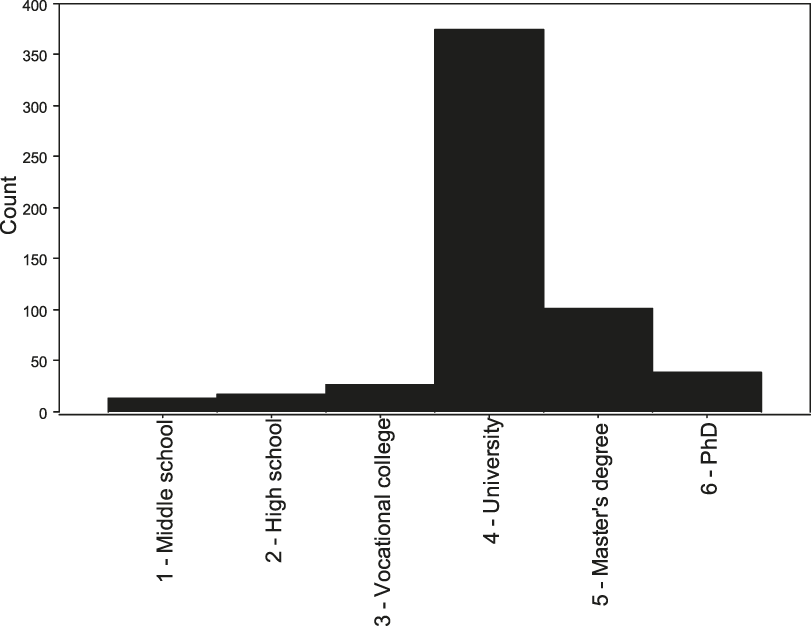
The emergence of birdwatching in China: history, demographics, activities, motivations, and environmental concerns of Chinese birdwatchers
The address of the Department of Biological Sciences is located in Gushan District, Kaohsiung City, 804, Taiwan, and it belongs to the National Sun Yat-sen University.
Summary

Birdwatching has gained popularity globally and has become a powerful tool for conservation efforts. With China’s growing economic and environmental importance, the emergence of birdwatching as a leisure activity in the country has drawn worldwide attention over the past thirty years. In a recent study, researchers conducted an extensive search of literature and online questionnaires to document the history, demographics, motivations, and environmental concerns of Chinese birdwatchers.
The study revealed that the rise of birdwatching in China is due to several factors, including the transfer of ornithological knowledge to birdwatchers, increasing political tolerance for leisure activities, the availability of leisure time, affordability of optical equipment, and urbanization. Furthermore, increased internet use and interaction with the media and foreign birdwatchers have contributed to its growth.
The survey received responses from 576 participants, revealing that two-thirds were male, and almost 90% were university-educated, with many having above-average income. Respondents were mainly from urbanized coastal or near-coastal provinces and primarily birdwatched for enjoyment and gaining knowledge about bird ecology. Many Chinese birdwatchers have also become concerned about the deteriorating state of the environment and the lack of government action.
Despite the political constraints set by the government, many birdwatchers are supporting environmental conservation efforts through various activities that have resulted in some conservation successes. However, legislative and administrative restraints limit the effectiveness of birdwatching societies and other environmental non-governmental organizations in promoting discourse with China’s government, hindering the country’s emerging but still strictly controlled and regulated civil society.
In summary, the rise of birdwatching in China has been fueled by various factors, leading to the emergence of an educated and affluent community of birdwatchers. Although they face political constraints, Chinese birdwatchers are contributing to environmental conservation efforts and seeking to engage with the government for more effective discourse.
Access options

To view the complete version of this content, please choose one of the access options below. If you do not have access, you may need to purchase the content. The login options will verify if you have institutional or personal access.
References

A publication by Barton, D., Chen, Y., and Jin, A. from 2013, titled “Mapping China’s Middle Class,” can be found in the McKinsey Quarterly journal, with a publication date of June, spanning from page 1 to page 7. This information is available through Google Scholar.
“The State of China Atlas: Mapping the World’s Fastest Growing Economy” is a book authored by Robert Benewick and Stephanie Hemelryk Donald, published in 2009 by the University of California Press in Berkeley, California, USA. The book explores China’s economic growth and development, tracing its history and mapping the country’s economic and social transformation. It provides a comprehensive understanding of China’s position in the world, examining its economic policies, social challenges, and geopolitical relationships.
The book is a valuable resource for anyone interested in China’s economic growth and development, as it provides an in-depth analysis of the country’s various economic sectors, including manufacturing, agriculture, energy, and services. It also covers topics such as urbanization, regional disparities, environmental challenges, and demographic changes.
The authors’ use of maps, diagrams, and statistics makes the book accessible and engaging, providing readers with a visual representation of China’s economic growth and development over the years. Additionally, the book examines China’s position in the global economy and its relationship with other countries, making it an essential read for anyone interested in international trade and diplomacy.
Overall, “The State of China Atlas” is a well-researched and informative book that provides readers with a comprehensive understanding of China’s economic growth and development. It is a must-read for anyone interested in China’s position in the global economy and the challenges and opportunities that lie ahead for this rapidly developing country.

A PhD thesis titled “The Politics of Public Participation and the Emergence of Environmental Proto-Movements in China” was written by A. M. Brettell in 2003. The thesis was completed at the University of Maryland in College Park, Maryland, USA, and is available for viewing through Google Scholar.
Chen, G.’s book chapter titled “Environmental NGOs and Emerging Civil Society” can be found in the publication “Politics of China’s Environmental Protection: Problems and Progress,” edited by Chen, G. The chapter spans from page 41 to page 52 and was published in 2009 by World Scientific in Singapore. This information is available through CrossRefGoogle Scholar.
The article “Present Status and Development of Birdwatching in Mainland China” by Cheng, Y.-x., Wang, J.-y., He, X., and Ma, Z.-j. was published in 2013 in the Journal of East China Normal University (Natural Science). The article, which can be found through Google Scholar, covers the current state of birdwatching in mainland China and its development over time. The article runs from page 63 to page 74.



